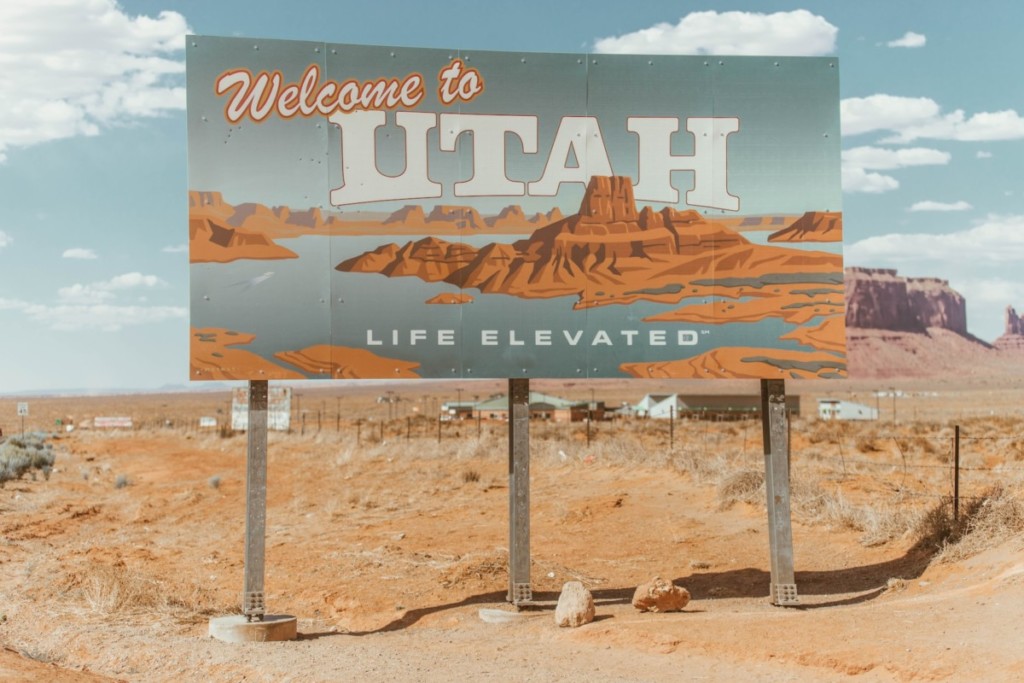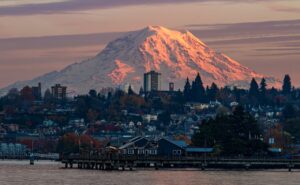10 Pros and Cons of Living in Utah

Utah, also known as The Beehive State, is a great place to live for those who enjoy outdoor activities and spending time in nature. From bouldering in Zion National Park and skiing in the mountains to wandering the Bonneville Salt Flats and small-town charm, you’ll never be tired of what Utah has to offer. So whether you’re considering buying a home in Provo or renting an apartment in Salt Lake City, Redfin has 10 pros and cons of living in Utah to help you decide if this state is a good place to live.
Interested in moving to Utah? Check out:
Homes for sale in Utah | Apartments for rent in Utah | Houses for rent in Utah
Quick Facts about Utah
Population
3,271,616
Median home sale price
$545,900
Average rent in Utah
$1,561
Largest cities in Utah
Salt Lake City, West Valley City, West Jordan
1. Pro: The scenery is stunning
Utah is home to many widely known national parks and landscapes, including Zion National Park, Bryce Canyon National Park, and Arches National Park. You can also find the Bonneville Salt Flats, a unique and otherworldly landscape famous for photoshoots for any occasion. Whether you love hiking, camping, or enjoying the views, Utah’s scenery is incomparable.
2. Con: Utah is full of uninhabited areas
The state of Utah is mainly rural, with much of the land being uninhabited. This can be a pro or a con depending on your perspective. Utah’s rural areas are a paradise for those who enjoy being away from the hustle and bustle of cities. However, the state’s vastness can also be daunting while driving to and from different cities.
3. Pro: The outdoor opportunities are endless
Utah is a mecca for outdoor enthusiasts. In the winter, you can enjoy skiing and snowboarding at one of the many resorts in the state, like Park City Mountain Resort or Snowbird. During the summer, you can raft down the Green River, mountain bike in Moab, or hike to your heart’s content at national parks. There are also many monuments to explore, such as the Golden Spike National Historic Site and the Dinosaur National Monument.
4. Con: The air quality isn’t the best
Although Utah’s air quality has improved in recent years, it remains a problem during the summer and winter. The state’s topography and the inversion layer significantly contribute to poor air quality, where warm air traps cold air and pollutants near the ground. The elderly, children, and those with respiratory problems are particularly at risk of the adverse effects of air pollution.
Poor air quality also contributes to haze and smog, obscuring views of the state’s beautiful scenery during the summer months. If you are considering moving to Utah, research the air quality of the area you plan to live.
5. Pro: You can enjoy all four seasons in this state
Utah has four distinct seasons, a significant pro for those who love experiencing all that nature offers. From the beautiful fall foliage to the fresh powder of winter, you’ll experience both while living in Utah. Spring and summer in the state are also lovely, with temperate weather perfect for enjoying all the state’s outdoor activities.
6. Con: Strict liquor laws
Utah has some of the strictest liquor laws in the nation. The state does not allow alcohol sales in grocery stores and only provides a limited number of liquor licenses. Alcohol sales are restricted to certain hours and days. These laws make it challenging to find places to buy alcohol. The state also has a “private club” system, which requires patrons to become members of certain clubs such as restaurants or bars to purchase alcohol. The membership fee is around $5-$10.
7. Pro: Utah’s public transportation system is efficient and well-built
Although Utah is a largely suburban and rural state, it has excellent public transportation options for those who live in or near the cities. The Utah Transit Authority (UTA) operates buses and light rails in Salt Lake City and other parts of the state. This makes it easy to get around without a car. The UTA also offers an electric bike share program, making exploring Utah’s cities and towns easier.
8. Con: You’ll need a car to get around
Although Utah has great transit in metropolitan areas, Utah is still a large state. It’s ranked as the 12th largest state, and you’ll need a car to get around to explore the various popular landscapes and far popular cities. If you’re looking to get from the state’s capital to a popular city like St. George (which has easy access to Zion National Park), you can expect the travel time to be around 4 hours by car.
9. Pro: Great winter sport opportunities
Utah offers some of the best skiing opportunities in the world, attracting individuals from far and wide. Renowned resorts such as Park City Mountain, Deer Valley, and Snowbird provide exceptional slopes and facilities for all skill levels. The state’s renowned powdery snow and picturesque mountain scenery make it a premier destination for winter sports. Additionally, Salt Lake City, known for its ski resorts, is often considered one of the best places to live in Utah.
10. Con: Summer droughts can be rough in Utah
Utah is a desert state, and summers are arid. Drought affects farmers and gardeners, as irrigation is necessary to keep plants alive during the hot, dry months. Wildfires are also a concern during Utah’s dry summers. The state is at risk for wildfires every year, and they cause extensive damage to property and natural resources. So looking to fireproof your home is essential.
The droughts also contribute to the state’s air pollution problem. Lack of rain means less air movement to disperse the pollutants. The state has implemented water conservation measures to combat the effects of summer drought. These measures include restrictions on watering lawns and landscaping. If you are considering moving to Utah, be ready to follow water conservation guidelines during the state’s dry summers and to prepare your home for drought.
The post 10 Pros and Cons of Living in Utah appeared first on Redfin | Real Estate Tips for Home Buying, Selling & More.





